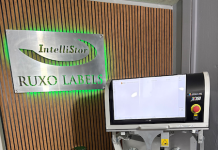The Star of Kenya is offering a premium experience for its readers with the combination of a KODAK TRENDSETTER Q400 Platesetter and SONORA XP Process Free Plates, chosen because of the benefits of an entirely process free plate solution and for the improvements in speed and quality it delivers.
When The Star’s publisher and managing editor, William Pike, and his team headed into The Star’s ‘month of ‘mad cap change’, a strategy to reinvigorate the print product, it set off a number of changes to their pre-press operation. ‘It had been over six years since we had embarked on an overhaul of the paper,’ said Pike. ‘The CTP device was over nine years old and worn out. We had also just commissioned a major redesign of the paper and began to converge the newsroom into one operation covering digital, TV, print and radio.’ If that wasn’t enough, as part of new rules set by Kenya’s environmental regulatory agency, NEMA, The Star was required to enter into a costly contract for the disposal of chemical waste.
Working with their longtime print supplier, Typotech, Pike and his team evaluated some options in the market to replace the aging CTP system. They chose the combination of a KODAK TRENDSETTER Q400 Platesetter and SONORA XP Process Free Plates.
‘This decision was an integral part of our whole redesign process, and we did not want to be let down by poor plate output. The Kodak CTP machine was installed only a few weeks before we were scheduled to launch the new paper to our readership. The first issue came out on Sonora plates, and the quality was exceptional. We’ve also been able to cancel the contract with NEMA since we’re no longer producing waste from processing plates,’ said Pike.
The TRENDSETTER Q400 Platesetter and SONORA XP Plates are also yielding big improvements for The Star’s printing business where they serve as the primary printing house for over 30 small-to-midsize papers in Kenya. Last year, The Star was only able to produce 20 plates per hour, whereas now it’s turning out 50-60 plates an hour. ‘We are so pleased with the speed at which we can turn out plates. Speed, of course, is the essence of the newspaper business, but it’s quality that sets us apart and there is a perceptible improvement in quality with Sonora plates.’
Like many newspapers, The Star is also balancing the reality that its readers are increasingly consuming content online. ‘We understand that there is a digital revolution, and we have built a strong web presence that attracts over 2 million unique visitors. At the same time, our strategy is to keep print alive by running a high quality, low-cost operation. We see a strong future under this model,’ said Pike.
The conditions in Kenya are ripe for this approach. While most print newspapers are struggling to survive, Kenya’s nearly 40 million citizens have a seemingly unquenchable passion for print. Part of the popularity of print, according to one media research expert, can be attributed to Kenyan culture, where ‘People want to see it, to believe it’. In fact, each newspaper in Kenya is typically read by fourteen people, and those who can’t afford to buy a paper sometimes ‘rent’ one.
‘A newspaper in a digital age needs to be a premium product with analysis, prediction and insight that people buy in addition to having read news online. That’s why you need clean, smart, design with exceptional print quality and excellent colour production. Kodak’s Sonora plates and Trendsetter have helped us deliver this premium experience for our readers,’ added Pike.





















